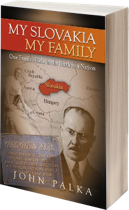Sokol
November 2, 2012
Sokol had a powerful impact on its members, and those who migrated to other lands in search of a better life took the idea with them. The first Sokol unit in the United States was established in 1865 in St. Louis, Missouri, just three years after the initial founding in Prague.
A hallmark of the Sokol movement has been the organization of periodic mass gatherings called slets, from the Czech sletnout, meaning to fly together. In the first slet in 1882 in Prague 700 men performed group exercises that were a cross between gymnastic floor exercises and dance movements. The greatest slet was in 1938, held in Prague’s Strahov Stadium, the largest in the world. With Hitler threatening to break up Czechoslovakia (see History), this slet was seen as an expression of national pride. The participants—men and women from the Czech lands, Slovakia, and numerous other nations including the United States—numbered 350,000, and more than two million spectators came to watch. The floor exercises brought 30,000 Sokols, both men and women, to the floor of the stadium all at once, moving in unison.

The picture you see here of the 1938 slet is from my mother’s photo album; I don’t know whether she was a participant or a spectator.
The Communist regime disbanded Sokol because of its deeply felt association with Czechoslovakia’s democratic past, replacing it with a new gymnastics organization that similarly put on mass performances called Spartakiads. These grew even larger, with 750,000 gymnasts taking part in 1960. After Communism fell in 1989, Sokol was organized anew.
There are numerous Sokol units and organizations in the United States, including American Sokol as well as many regional ones. In addition to gymnastics, they support dance and other expressions of Czech and Slovak culture. Some of the units are either Czech or Slovak; others are mixed. The unit with the oldest continuously functioning Sokol building (the CSPS Sokol Hall) is Czech & Slovak Sokol of Minnesota, celebrating its 125th anniversary in 2012.
For a convenient summary of Sokol history go to: http://www.american-sokol.org/history.php
For a history of the slets since 1882 go to: http://www.dasokol.com/cos_slets.html
The web site of Czech & Slovak Sokol Minnesota is rich in information and has many useful links: http://www.sokolmn.org/
You can see a video of nearly 2,000 seniors performing at the slet of 2006; some of them would have remembered the slet of 1938: http://www.youtube.com/watch?v=mjgRsGRzGuw&feature=related
